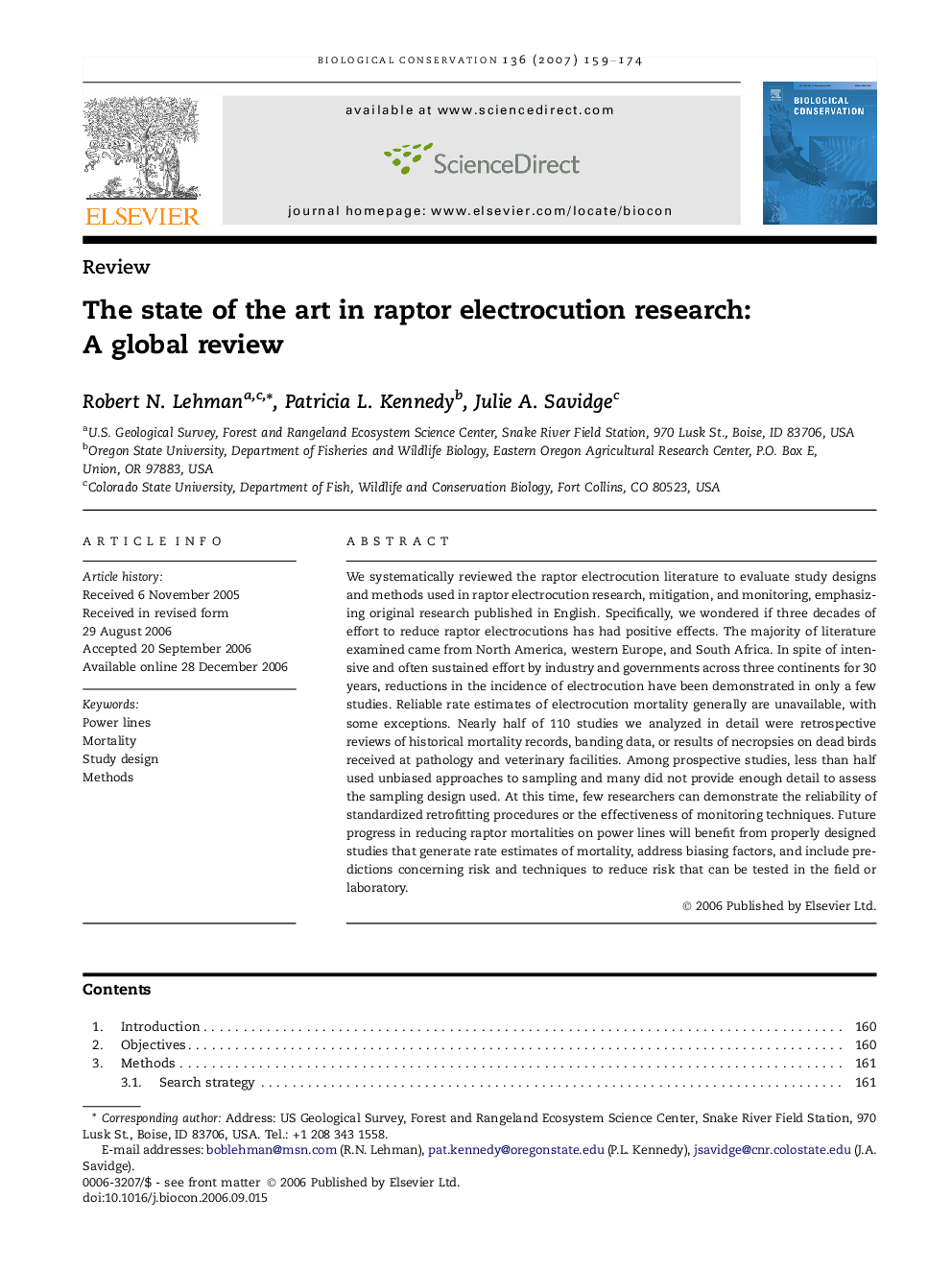| Article ID | Journal | Published Year | Pages | File Type |
|---|---|---|---|---|
| 4387093 | Biological Conservation | 2007 | 16 Pages |
We systematically reviewed the raptor electrocution literature to evaluate study designs and methods used in raptor electrocution research, mitigation, and monitoring, emphasizing original research published in English. Specifically, we wondered if three decades of effort to reduce raptor electrocutions has had positive effects. The majority of literature examined came from North America, western Europe, and South Africa. In spite of intensive and often sustained effort by industry and governments across three continents for 30 years, reductions in the incidence of electrocution have been demonstrated in only a few studies. Reliable rate estimates of electrocution mortality generally are unavailable, with some exceptions. Nearly half of 110 studies we analyzed in detail were retrospective reviews of historical mortality records, banding data, or results of necropsies on dead birds received at pathology and veterinary facilities. Among prospective studies, less than half used unbiased approaches to sampling and many did not provide enough detail to assess the sampling design used. At this time, few researchers can demonstrate the reliability of standardized retrofitting procedures or the effectiveness of monitoring techniques. Future progress in reducing raptor mortalities on power lines will benefit from properly designed studies that generate rate estimates of mortality, address biasing factors, and include predictions concerning risk and techniques to reduce risk that can be tested in the field or laboratory.
